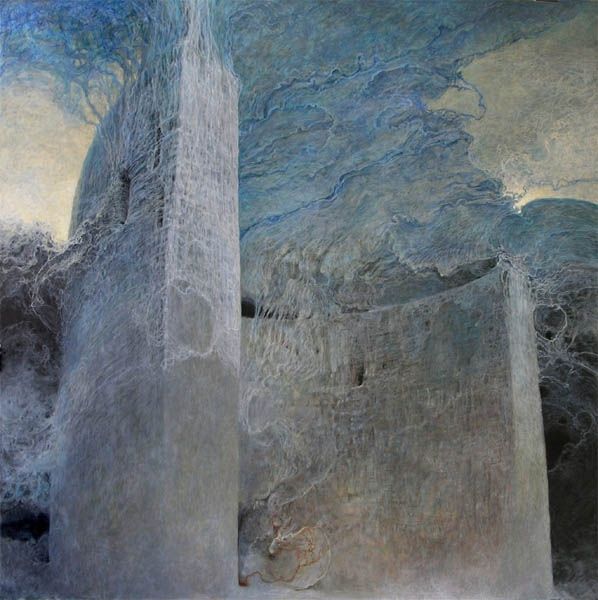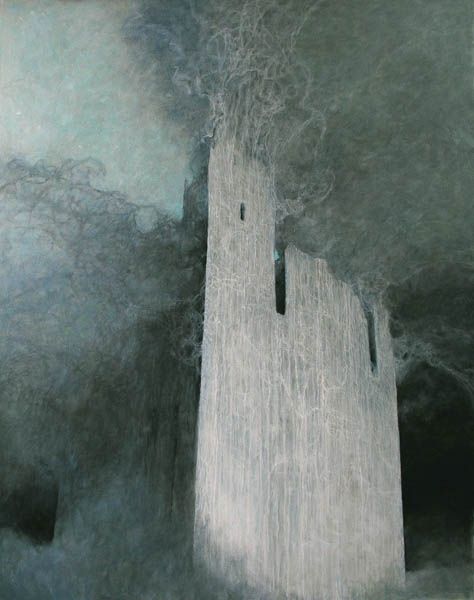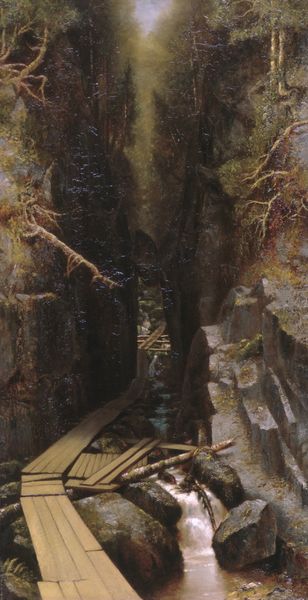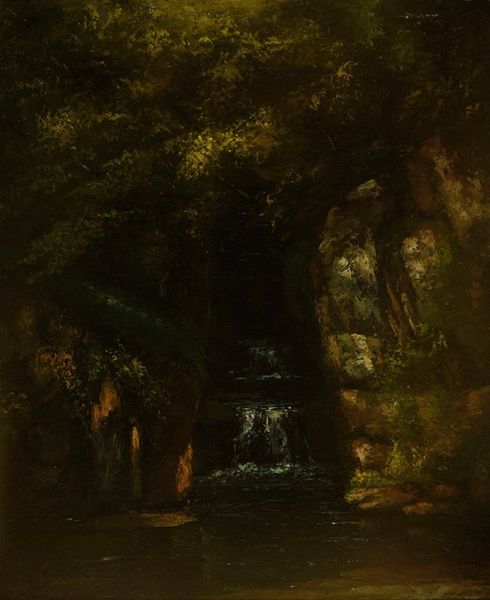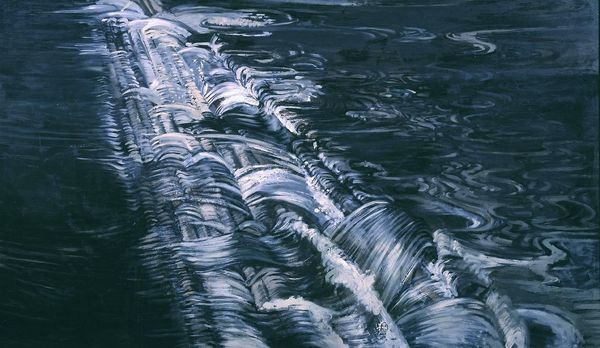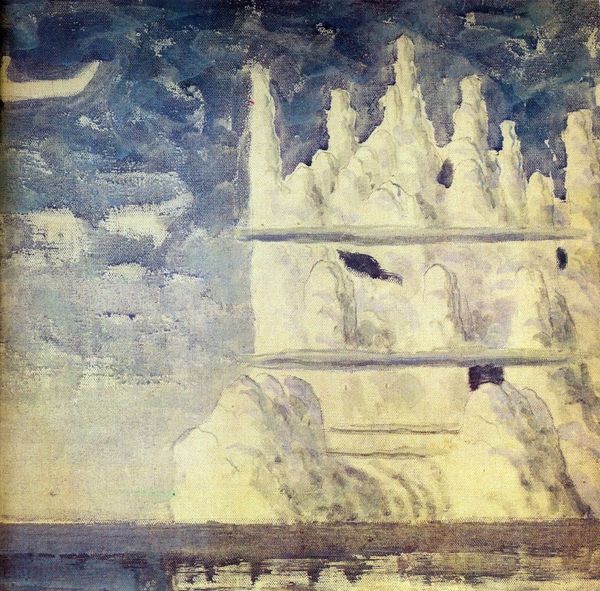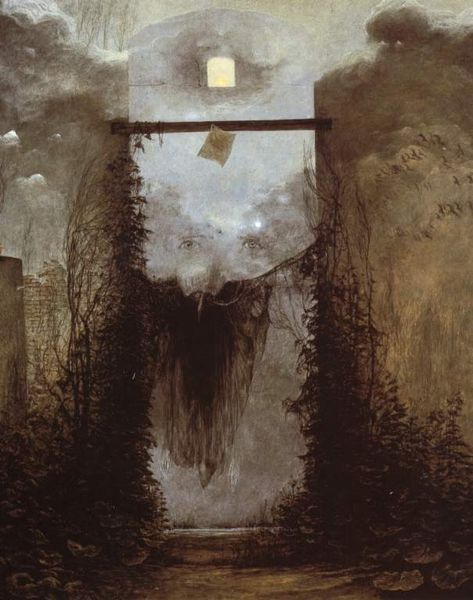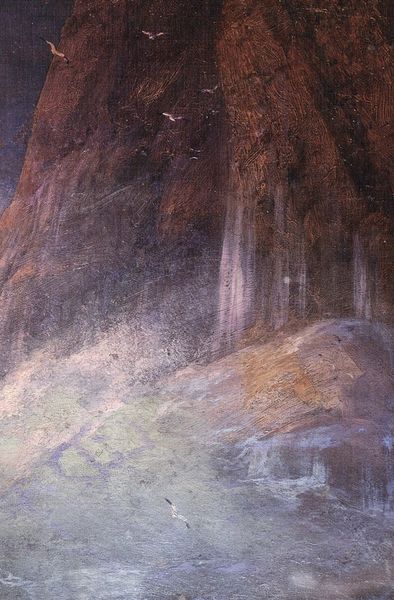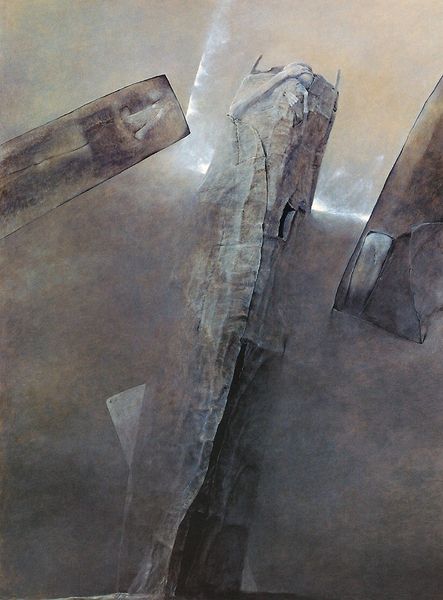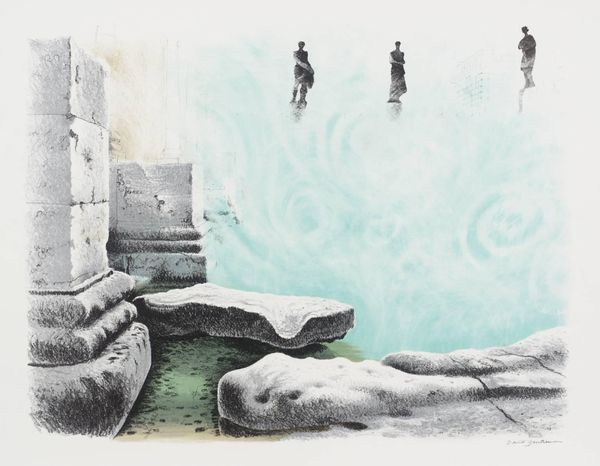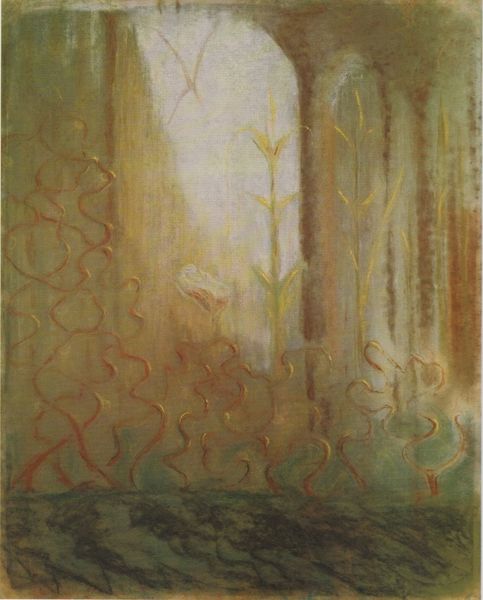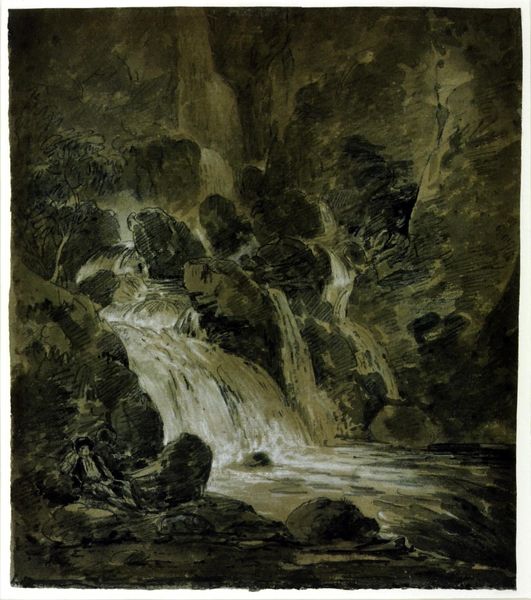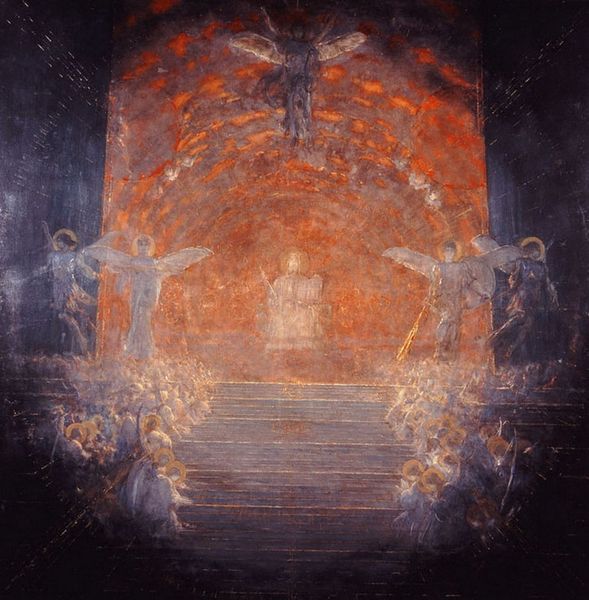
painting, oil-paint
#
abstract expressionism
#
painting
#
oil-paint
#
landscape
#
form
#
expressionism
#
abstraction
#
line
Copyright: © The Historical Museum in Sanok (Poland) is the exclusive owner of copyrights of Zdzisław Beksiński's works.
Curator: This is an Untitled work by Zdzislaw Beksinski. Though undated, it's recognized within his oeuvre, painted using his signature oil paint technique. Editor: Immediately, I’m struck by the oppressive, almost gothic, atmosphere. It’s rendered in such muted tones, primarily grayscale with hints of greens and blues, creating this overwhelming sense of decay and the architectural structures appearing very eroded. Curator: Indeed. Beksinski's works often tap into a deep well of cultural anxiety, and the imagery here definitely contributes to that. Those towering, decaying structures against that dark abyss...they seem almost allegorical. You might interpret the eroded forms as symbols of inevitable societal collapse or the impermanence of human achievement. The way those structures are layered could indicate social strata in a world dominated by the old forms. Editor: That reading makes sense. From my perspective, the surface treatment also underscores those ideas of decay. You can practically feel the labor of the artist, applying oil upon oil to get these textures, which reminds me of eroded sediment. I’m very interested in the amount of labor he invested, too. Was it intended to directly reflect societal processes, that idea of constant work to preserve crumbling power? Curator: Considering his interest in recurring nightmare motifs, I’m sure his use of form plays with both collective conscious of societal unease. Even in the "abstraction," it clearly echoes things people intuitively find unsettling; decay, vastness, entrapment... And note the fine white line work overlaid, resembling perhaps cracks or maybe a kind of parasitic growth across these constructions. Editor: Interesting point about the parasitic growth. That makes me consider the relationship of support and parasite which exists in any power system – one could ask whose ‘life’ feeds on the decay. His application almost looks like web of decay… Curator: Yes, a perfect visual symbol, right? His personal losses during World War II probably deeply colored the symbolic architecture of the picture, expressing not only the trauma, but the persistent feeling of being haunted by specters of those lost structures, beliefs, or forms. Editor: It gives much food for thought: to look beyond aesthetics into our societal anxieties around labor and construction of societal powers is important. The surface treatment underscores its core meaning through materiality itself. Curator: It really showcases the enduring power of art to mirror our shared anxieties in the 20th century onward. Editor: Absolutely. Thanks for contextualizing this work; it deepens its power!
Comments
No comments
Be the first to comment and join the conversation on the ultimate creative platform.
